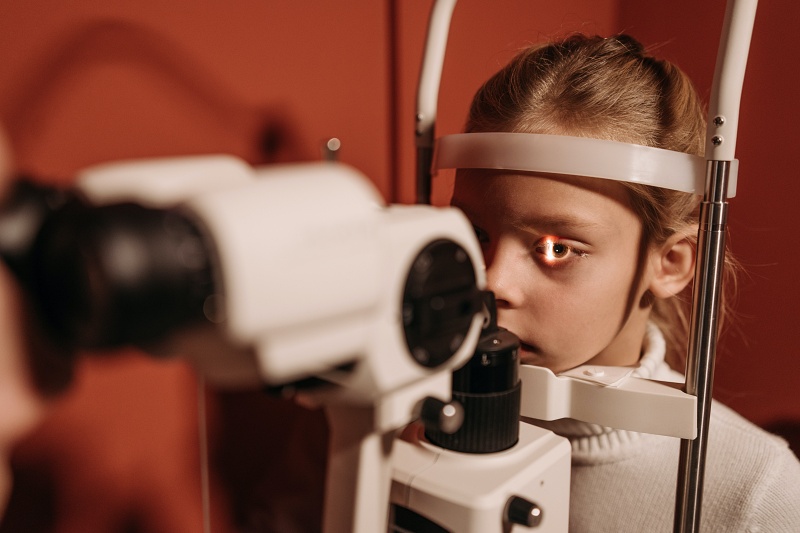
Support your child's highest potential.
Healthy vision is one of the most important components of your child’s wellness.
Vision develops rapidly starting at birth and is tied to many developmental milestones, such as hand-eye coordination and reading. In the long term, your child’s vision will impact how they learn, play, and interact with the world.
While there may be some obvious signs of visual disorders, many vision problems can only be detected by a qualified eye doctor during a comprehensive eye exam.
Is your child having trouble seeing?
It is not always easy to spot vision problems in kids.
Some symptoms are more obvious, like squinting or holding reading materials very close. But often the early signs are subtle and can even be misdiagnosed.
Your child may be experiencing a vision problem if he or she does any of the following:
- Avoids reading and close-up work like coloring or doing puzzles
- Seems to work slow or not understand the task
- Complains of fatigue or headaches
- Has a short attention span or seems distracted
- Covers one eye or tilts head when focusing on something
- Shows sensitivity to light
- Exhibits difficulty with coordination
Common eye disorders in children
Vision can be affected by many things, including the shape of the eyeball, how the eyes and brain work together, and by other diseases or medical conditions. The good news is that many eye disorders can be successfully identified and treated.
The most common eye disorders are caused by the shape and alignment of the eyes, including:
Strabismus is when the eyes do not align properly. This is often referred to as "crossed eyes".
Amblyopia is poor vision in one eye, and is sometimes referred to as "lazy eye". It usually occurs before the age of eight. Infants born prematurely or with low birth weight are at greater risk.
Refractive errors cause blurry images due to the shape of the eyeball or lens. These common conditions are easily treated with glasses or contact lenses. There are three types of refractive errors:
- Myopia or nearsightedness is good close vision but poor distance vision.
- Hyperopia or farsightedness is poor up-close vision. Distant objects can easily be seen.
- Astigmatism is imperfect vision at any distance.
Eye exam schedule for kids
Routine eye exams are a crucial part of your child’s well-being and readiness for learning. Many parents do not know that school screenings are not the same as eye exams. Even with 20/20 vision, your child can still have problems that only an eye doctor can detect.
Newborns have their eyes checked before leaving the hospital. And leading medical organizations recommend comprehensive eye exams for health, vision development, and alignment at these ages:
- Between 6 and 12 months
- 3 years of age
- Every year throughout the school years
Support your child's highest potential — request an appointment at Isthmus Eye Care today.
“I had such an overwhelmingly positive experience. Everyone in the office has a great attitude and explained everything to me from start to finish. The eye exam was such a simple and efficient process. My tech was such a ray of sunshine during my early morning appointment. Dr. Jun is very intelligent and personable and makes you feel right at home. He worked to understand my eye concerns and lifestyle and set me up with lenses that will work best for me. He's also a rescue dog dad - what's better than that?! Angie picked out a TON of pairs for me to try on and helped me make the right decision - I'M OBSESSED. The cherry on top? Angie said to expect the glasses in 2-3 weeks, and I got them in A WEEK! The fitting took 2 minutes, and I was out the door. 11/10, would recommend.”
Elizabeth C.

